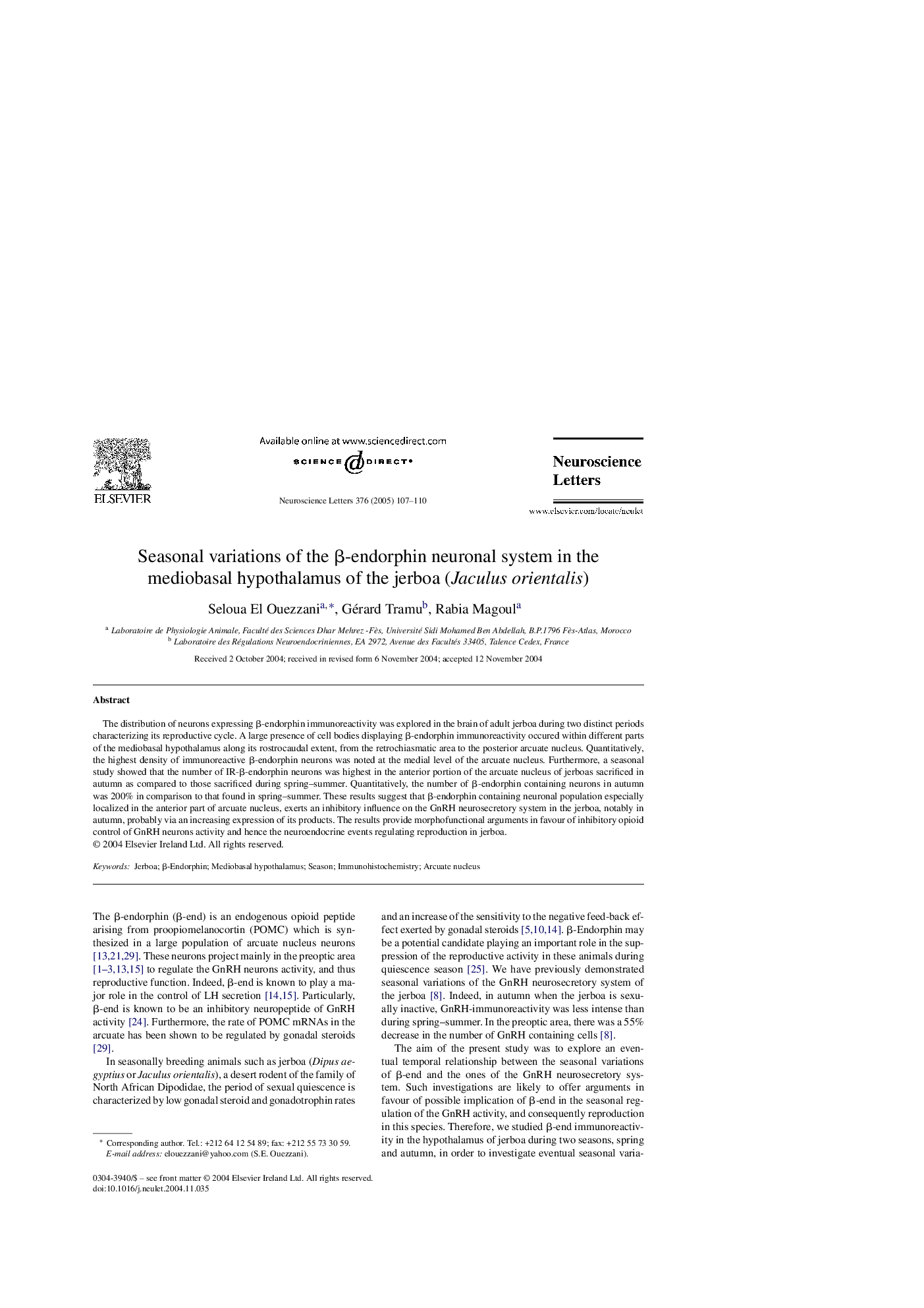| Article ID | Journal | Published Year | Pages | File Type |
|---|---|---|---|---|
| 9429464 | Neuroscience Letters | 2005 | 4 Pages |
Abstract
The distribution of neurons expressing β-endorphin immunoreactivity was explored in the brain of adult jerboa during two distinct periods characterizing its reproductive cycle. A large presence of cell bodies displaying β-endorphin immunoreactivity occured within different parts of the mediobasal hypothalamus along its rostrocaudal extent, from the retrochiasmatic area to the posterior arcuate nucleus. Quantitatively, the highest density of immunoreactive β-endorphin neurons was noted at the medial level of the arcuate nucleus. Furthermore, a seasonal study showed that the number of IR-β-endorphin neurons was highest in the anterior portion of the arcuate nucleus of jerboas sacrificed in autumn as compared to those sacrificed during spring-summer. Quantitatively, the number of β-endorphin containing neurons in autumn was 200% in comparison to that found in spring-summer. These results suggest that β-endorphin containing neuronal population especially localized in the anterior part of arcuate nucleus, exerts an inhibitory influence on the GnRH neurosecretory system in the jerboa, notably in autumn, probably via an increasing expression of its products. The results provide morphofunctional arguments in favour of inhibitory opioid control of GnRH neurons activity and hence the neuroendocrine events regulating reproduction in jerboa.
Related Topics
Life Sciences
Neuroscience
Neuroscience (General)
Authors
Seloua El Ouezzani, Gérard Tramu, Rabia Magoul,
